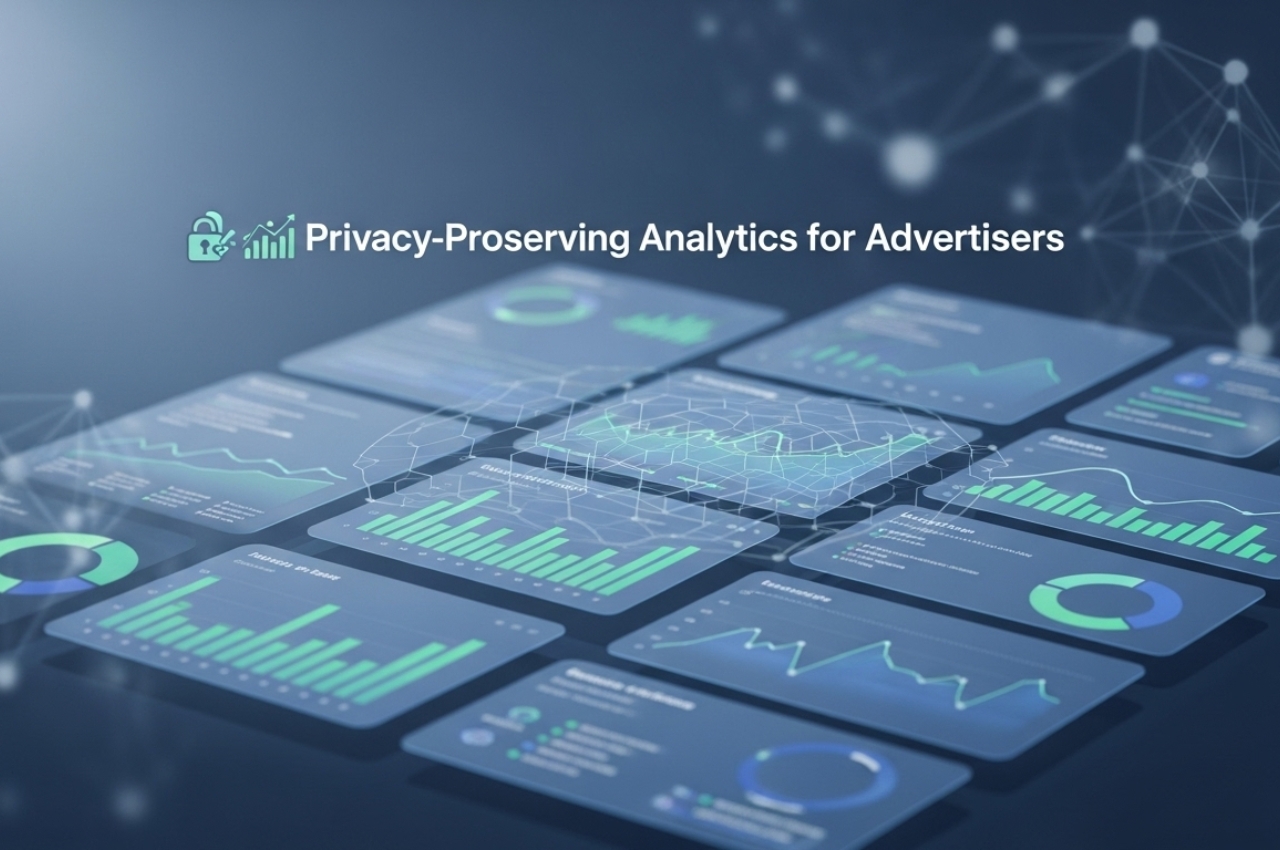The advertising landscape is rapidly evolving under increasing scrutiny around data privacy. Privacy-preserving analytics for advertisers has emerged as a vital approach that empowers marketers to derive critical insights without compromising consumer privacy. This methodology aligns with stringent regulations such as GDPR and CCPA, and addresses growing consumer demands for transparent and ethical data use.
This article explores the foundational principles of privacy-preserving analytics, examines the technological enablers, and provides actionable guidance for advertisers seeking to navigate this complex environment effectively. Readers will gain clarity on implementing privacy-conscious strategies that balance business effectiveness with consumer trust.
What is Privacy-Preserving Analytics for Advertisers?
Privacy-preserving analytics encompasses a suite of techniques designed to enable advertisers to gather actionable data insights without exposing or compromising personal user information. Unlike traditional data analytics, which often require granular user data, privacy-preserving methods emphasize aggregation, anonymization, and encryption to maintain confidentiality. These approaches help marketers comply with global data protection regulations while still extracting meaningful trends that inform campaign optimization and audience understanding.
Importance of Privacy in Advertising Today
In recent years, consumer awareness of privacy and regulatory oversight has intensified dramatically. Legislation such as the General Data Protection Regulation (GDPR) in the European Union and the California Consumer Privacy Act (CCPA) in the United States enforces strict guidelines on data processing and user consent. Advertisers failing to adhere face substantial legal penalties and reputational damage. More importantly, prioritizing privacy is now a core element in building and maintaining trust with consumers, which directly correlates to brand loyalty and sustainability in digital marketing.
Technologies Enabling Privacy-Preserving Analytics
Several cutting-edge technologies have been pivotal in advancing privacy-preserving analytics:
- Differential Privacy: This approach introduces controlled statistical noise into datasets to prevent re-identification of individuals while preserving overall data accuracy.
- Federated Learning: Empowers models to be trained across decentralized devices or servers holding data locally, transmitting only anonymized updates instead of raw data.
- Homomorphic Encryption: Enables computations to be performed on encrypted data, allowing data protection throughout the entire analytic process.
- Secure Multi-Party Computation: Permits multiple entities to collaboratively compute analyses over their combined data without revealing the underlying personal information.
Collectively, these technologies allow advertisers to harness AI and analytics capabilities without sacrificing privacy.
Impact on Advertiser Strategies and User Trust
The shift to privacy-preserving analytics necessitates strategic adaptations from advertisers. Individual-level targeting is often replaced by cohort or contextual marketing, emphasizing broader behavioral patterns rather than explicit personal identifiers. While this may initially constrain micro-targeting precision, brands gain the critical advantage of transparency and ethical data practices, fostering elevated consumer trust—a foundational pillar for long-term engagement. Brands openly communicating data usage and privacy policies strengthen their reputation and compliance stature, differentiating themselves in competitive marketplaces.
How to Implement Privacy-Preserving Analytics for Advertisers:
- Audit Existing Data Practices: Identify data collection, storage, and processing methods with a focus on privacy compliance.
- Choose Suitable Privacy Technologies: Implement differential privacy or federated learning frameworks aligned with business needs.
- Redesign Data Collection Mechanisms: Minimize personally identifiable information, favor aggregated and anonymized datasets.
- Update Privacy Policies and Consent Protocols: Ensure transparency, clear user communication, and easy opt-out options.
- Train Relevant Teams: Marketing, analytics, and compliance staff must understand privacy principles and technological changes.
- Monitor and Refine Continuously: Deploy KPIs related to privacy measures and campaign effectiveness; adjust accordingly.
- Engage Consumers Transparently: Maintain open dialogue on data stewardship practices to build trust.
Tools and Solutions for Advertisers
- Google Privacy Sandbox
- Apple’s SKAdNetwork
- Facebook Aggregate Event Measurement
- OneTrust Data Privacy Platform
- BigID Data Intelligence
- Snowflake Data Cloud (with integrated encryption)
- OpenMined for federated learning
- Enterprise homomorphic encryption solutions
Case Study: Privacy-Preserving Analytics in Action
A prominent retail brand transitioned its advertising analytics to a differential privacy model, foregoing granular individual profiling. This change enabled enhanced cohort targeting accuracy, maintaining campaign efficiency. Post-implementation metrics showed a 15% increase in ad relevance and a 25% rise in positive consumer trust indicators, verified through brand sentiment analysis surveys. This case underscores the commercial viability of privacy-first strategies.
Metrics and Compliance KPIs
- Incident rate of privacy breaches.
- Rate of user consent acquisition and retention.
- Accuracy and reliability of aggregated user insights.
- Volume of privacy-related customer complaints.
- Results from periodic compliance audits.
- Performance improvements in privacy-friendly campaigns.
Checklist & Action Plan for Advertisers
- Immediate: Audit current practices and ensure privacy policy transparency.
- Short-term: Deploy privacy-enhancing technologies and update user consent mechanisms.
- Long-term: Embed privacy metrics in analytics dashboards and conduct continual staff training.
FAQs
1. What are privacy-preserving analytics for advertisers?
Techniques that protect user identities by analyzing anonymized or aggregated data to provide insights without compromising individual privacy.
2. Why do advertisers need to adopt privacy-preserving analytics?
To comply with data protection laws, build consumer trust, and ethically manage user data for effective campaigns.
3. Which technologies support privacy-safe data analysis?
Differential privacy, federated learning, homomorphic encryption, and secure multi-party computation.
4. How do privacy-preserving approaches impact advertising effectiveness?
They may reduce granularity but improve user trust and long-term engagement, leading to sustainable performance.
5. How can organizations begin implementing these analytics?
Start with data audits, update user consent flows, and select tools designed for privacy compliance.

